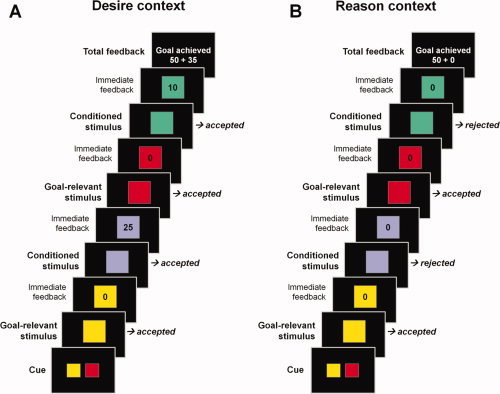Figure 1.

Experimental design of the modified sequential forced‐choice task. (A) “Desire context”: Subjects had to select all targets and had to reject all neutral nontargets. They were further free to select the conditioned (rewarding) nontargets (i.e., to follow previously acquired stimulus‐response‐reward associations) to acquire bonuses during pursuit of the superordinate long‐term task goal. (B) “Reason context”: Subjects had to select all targets and had to reject all neutral nontargets. In addition, participants always had to reject the conditioned (rewarding) nontargets in this context. This led to a “desire‐reason dilemma” during which participants had to counteract the behavioral bias oriented toward immediate reward and had to abandon the potential immediate bonuses to achieve the superordinate long‐term task goal. [Color figure can be viewed in the online issue, which is available at wileyonlinelibrary.com.]
